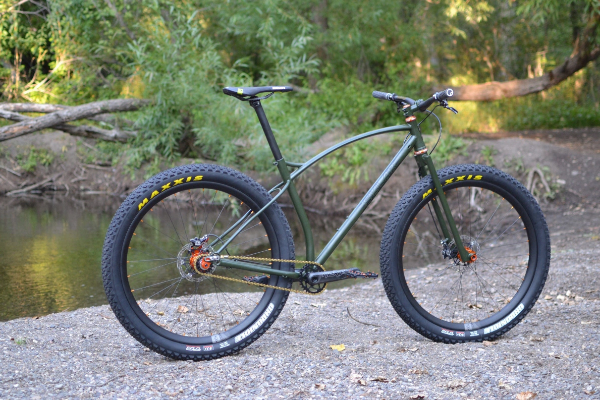Utility bikes are designed for practical purposes. They serve as a reliable mode of transportation for everyday tasks. From commuting to work to running errands, utility bikes cater to a wide range of needs. This article delves into the features, benefits, and types of utility bikes.
Understanding Utility Bikes
Utility bikes prioritize function over speed. Unlike racing or mountain bikes, they are built for comfort and stability. These bikes often come equipped with features that make them ideal for carrying loads and navigating urban environments.
Key Features of Utility Bikes
Utility bikes are distinguished by several important features:
Frame Design: Utility bikes typically have a sturdy frame. This design allows for better load distribution and durability.
Comfortable Seating: These bikes often feature wider, cushioned seats. The seating position is usually upright, promoting comfort during long rides.
Cargo Capacity: Many utility bikes include racks, baskets, or panniers. These additions enable users to carry groceries, backpacks, or other items easily.
Fenders: Fenders help protect riders from mud and water. This feature is especially useful in rainy conditions.
Wide Tires: Utility bikes usually have wider tires for better traction. This design allows for a smooth ride on various surfaces.
Benefits of Using a Utility Bike
There are numerous advantages to riding a utility bike:
Eco-Friendly: Utility bikes produce zero emissions. They provide an environmentally friendly alternative to cars.
Cost-Effective: Owning a utility bike can save money. Users spend less on gas, parking, and maintenance compared to vehicles.
Health Benefits: Riding a bike is an excellent form of exercise. It promotes cardiovascular health and helps maintain a healthy weight.
Convenience: Utility bikes can navigate congested urban areas easily. They can also access bike lanes and paths, reducing travel time.
Versatility: Utility bikes can be used for various purposes. Whether it’s commuting, shopping, or running errands, they adapt to many activities.
Types of Utility Bikes
Several types of utility bikes cater to different needs:
Cargo Bikes: These bikes are specifically designed for carrying heavy loads. They often have a long frame and a large cargo area in the front or rear.
Bike Share Programs: Many cities offer bike-sharing services. These utility bikes are accessible for short trips and are perfect for tourists and commuters.
Electric Utility Bikes: Electric or e-bikes provide pedal assistance. This feature makes it easier to carry heavy loads or tackle steep hills.
Folding Utility Bikes: These bikes can be folded for easy storage and transport. They are great for people with limited space or those who use public transport.
Choosing the Right Utility Bike
When selecting a utility bike, consider the following factors:
Intended Use: Determine how you plan to use the bike. Will you be commuting, shopping, or transporting children? Your intended use will guide your choice.
Load Capacity: Check the bike’s load capacity. Ensure it can handle the weight you plan to carry.
Comfort: Test the bike’s seating and handlebar height. Comfort is key for longer rides.
Budget: Set a budget before shopping. Utility bikes come in a range of prices, so knowing your budget helps narrow your options.
Maintenance of Utility Bikes
Regular maintenance is essential for keeping your utility bike in good condition:
Tire Care: Check tire pressure regularly. Properly inflated tires enhance performance and safety.
Brake Inspection: Ensure brakes are functioning well. Regularly inspect brake pads and cables for wear.
Lubrication: Keep the chain and moving parts lubricated. This reduces friction and extends the bike’s lifespan.
Cleaning: Regularly clean your bike to remove dirt and grime. This helps prevent rust and other issues.
Riding Safety Tips
Safety is crucial when riding a utility bike:
Wear a Helmet: Always wear a properly fitted helmet. This is one of the most effective ways to protect yourself.
Use Lights: Equip your bike with front and rear lights. This enhances visibility, especially in low-light conditions.
Signal Turns: Use hand signals to indicate turns. This helps communicate your intentions to other road users.
Stay Aware: Be mindful of your surroundings. Look out for pedestrians, other cyclists, and vehicles.
Community and Utility Bikes
Many communities promote the use of utility bikes:
Bike Lanes: Cities are increasingly developing bike lanes. These dedicated paths make riding safer and more enjoyable.
Bike Events: Local bike events encourage community engagement. They often include group rides, workshops, and social gatherings.
Advocacy Groups: Various organizations advocate for cycling infrastructure. Joining these groups can help support cycling initiatives in your area.
Conclusion
Utility bikes are versatile and practical. They provide an eco-friendly, cost-effective mode of transportation for various activities. Whether you’re commuting, shopping, or simply enjoying a ride, utility bikes are designed to meet your needs. By understanding their features and benefits, you can make an informed decision about which utility bike is right for you. Embrace the convenience and joy of riding a utility bike and experience a healthier, more sustainable lifestyle.
Related topics:


